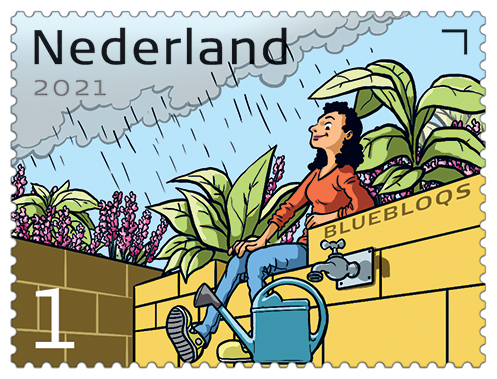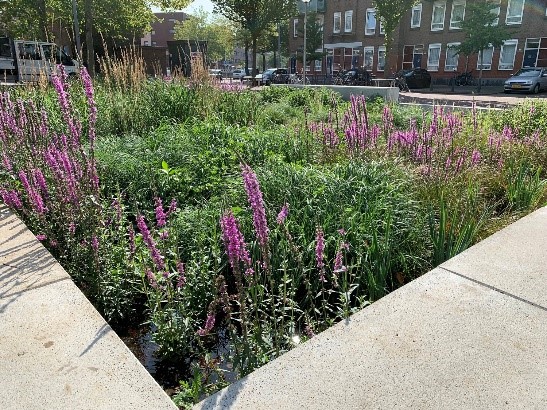
Rain, it’s every cyclists worst nightmare. But 10 projects do a little dance when the weather forecast predicts dark clouds, because here Bluebloqs catch rainwater and store it so it can be used in times of drought. This means that valuable drinking water is saved, which is often times still used to water gardens or sports fields. A great example of rethinking how we view rain, which even cyclists will undoubtedly confirm. Karina Peña, CEO of Field Factors, the company behind Bluebloqs, tells us more about their technology.
How did Bluebloqs get started?
“During a heavy rainstorm in Amsterdam, me and Field Factors co-founder Wilrik Kok (also TU Delft alumnus) noticed that the water in the street was difficult to drain; the sewage system was overloaded. It got us thinking: why do we actually use sewers to carry water away from the city and then bring it in through other pipes? Why don't we collect that water where it falls and then use it locally? That's how it all started.
Bluebloqs wants to restore the natural water cycle in a place where we need it most: the city. At the same time, we want to make the city greener with vegetation, you need water for that. We do this in a way that has been used for some time in the Netherlands, in the greenhouses of the Westland: deep infiltration. By storing water underground, our innovation does not have to take up much valuable urban space, but you still ensure sufficient storage capacity for rainwater. With only 15 millimeters of rain storage you already collect 95% of the annual precipitation.”
What successes have been achieved?
"Quite a lot. The support of research institute KWR, to validate the efficacy of our technology, has helped us tremendously.
I also see the front runners who dared the pilot projects in Rotterdam, Delft and Madrid with us, when we were still in full development, as a great success. I think our project with the climate-adaptive forecourt of Diergaarde Blijdorp in Rotterdam is a strong example.
We’ve won the necessary innovation awards, the most recent of which is the Urban Water Challenge. We have been chosen from 235 entries from 44 countries, which is a confirmation that we are on the right track. There is a growing awareness that water shouldn’t be taken for granted.”

What challenges have you encountered?
“Also quite a lot. The biggest being the Dutch water sector itself. The water sector is very traditional, therefore innovations aren’t easily implemented. To look differently at a water system that hasn’t seen change for years, takes time. We needed to inspire a different mindset.
Regulations hinder us at times, which means we have to walk when we want to run. Therefore installing our prototype on The Green Village, on TU Delft Campus, is of great importance. Here we can convince the right people of our innovation."
What are the next steps regarding Bluebloqs?
“We’re in an exciting, challenging fase: we are optimising our technology and are trying to scale-up simultaneously. In The Netherlands, but also internationally.
We see a lot of added value in collaboration. Ever since the beginning we’ve been collaborating with the TU Delft and multiple engineering firms. We want to keep that up.”
Bluebloqs is now going ‘around the world’ on a stamp. What’s your take on this?
“We can’t go without water in our cities: we need it to make the city greener, to make the city cooler and to keep our cities habitable in the future. We’re convinced we can use valuable water locally instead of draining it, like we’re doing now. That’s the message we want to spread.”